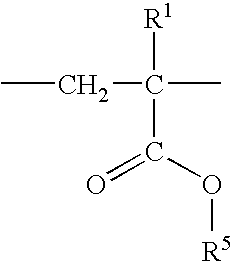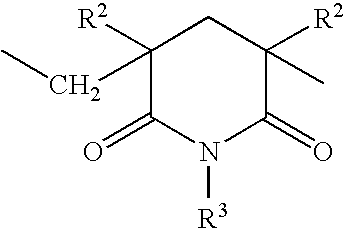Laser-sintering powder with PMMI, PMMA, and/or PMMI-PMMA copolymers, process for its preparation, and moldings produced from this laser-sintering powder
a laser sintering powder and copolymer technology, applied in the field of laser sintering powder, can solve the problems of inaccessibility and achieve the effects of good dimensional stability, smooth surface and good resolution
- Summary
- Abstract
- Description
- Claims
- Application Information
AI Technical Summary
Benefits of technology
Problems solved by technology
Method used
Image
Examples
example 1
Preparation of Laser-Sintering Powder With no PMMI
[0057]40 kg of unregulated PA 12, which was prepared by hydrolytic polymerization by a method based on DE 35 10 691, Example 1, with a relative solution viscosity ηrel of 1.61 (in acidified m-cresol) and with an end group content of 72 mmol / kg of COOH and 68 mmol / kg of NH2, were heated to 145° C. with 0.3 kg of Irganox® 1098 in 350 L of ethanol denaturated with 2-butanone and 1% water content within a period of 5 hours in a 0.8 m3 stirred vessel (diameter=90 cm, height=170 cm), and held for 1 hour at this temperature with stirring (blade stirrer: blade diameter=42 cm, blade rotation=91 rpm). The jacket temperature was then reduced to 120° C., and the internal temperature was brought to 120° C., using a cooling rate of 45 K / h, with the same stirrer rotation rate. While using the same cooling rate, the jacket temperature was maintained at a level of from 2 to 3 K below the internal temperature. The internal temperature was brought to 1...
example 2
Preparation of Laser-Sintering Powder by Incorporation of PMMI (PLEXIMID 8813) by Compounding Followed by Milling
[0059]40 kg of regulated VESTAMID L1600 PA 12 from Degussa AG, prepared by hydrolytic polymerization, were extruded with 0.3 kg of Irganox® 245 and 0.8 kg of PMMI (PLEXIMID 8813, Röhm GmbH) at 225° C. in a twin-screw compounder (Berstorf ZE25), and strand-pelletized. The pellets were then milled at low temperatures (−40° C.) in an impact mill to give a grain size distribution from 0 to 120 μm. 40 g of Aerosil 200 (0.1 part) were then mixed into the material for 3 minutes at 500 rpm and room temperature.
example 3
Preparation of Laser-Sintering Powder by Incorporation of PMMI (PLEXIMID 8813) PMMI in a Dry Blend
[0060]The dry blend process, which utilized a FML10 / KM23 Henschel mixer for 3 minutes at 50° C. and 700 rpm, was used to mix 100 g (5 parts) of PLEXIMID 8813 with 1900 g (95 parts) of nylon-12 powder prepared in accordance with DE 29 06 647, Example 1, with a median grain diameter d50 of 56 μm (laser scattering) and with a bulk density of 459 g / L to DIN 53466. 2 g of Aerosil 200 (0.1 part) were then mixed into the material within 3 minutes at room temperature.
[0061]The same conditions were used to prepare other powders having 0, 1, 3, 4, and 10% of PLEXIMID 8813.
[0062]Further processing:
[0063]The powders from Example 3 were used on a laser-sintering machine to construct the test specimens described above for determining beam compensation, and to construct a multipurpose specimen to ISO 3167. A tensile test to EN ISO 527 was used to determine mechanical values on the latter components. E...
PUM
| Property | Measurement | Unit |
|---|---|---|
| median particle size | aaaaa | aaaaa |
| freezing point | aaaaa | aaaaa |
| enthalpy of fusion | aaaaa | aaaaa |
Abstract
Description
Claims
Application Information
 Login to View More
Login to View More - R&D
- Intellectual Property
- Life Sciences
- Materials
- Tech Scout
- Unparalleled Data Quality
- Higher Quality Content
- 60% Fewer Hallucinations
Browse by: Latest US Patents, China's latest patents, Technical Efficacy Thesaurus, Application Domain, Technology Topic, Popular Technical Reports.
© 2025 PatSnap. All rights reserved.Legal|Privacy policy|Modern Slavery Act Transparency Statement|Sitemap|About US| Contact US: help@patsnap.com



